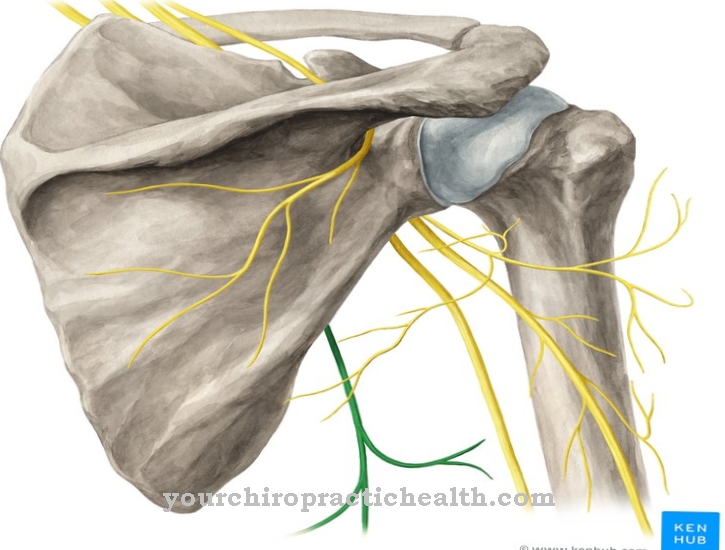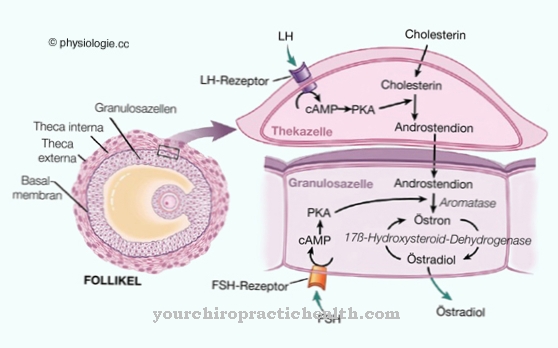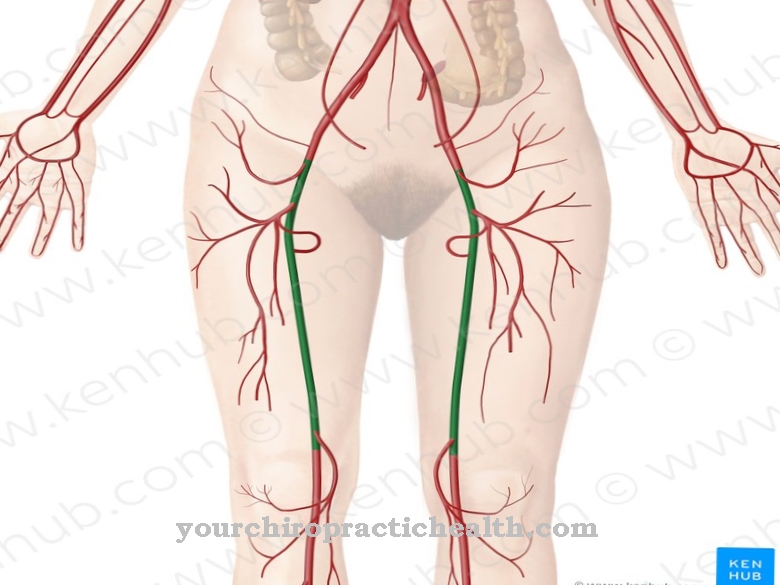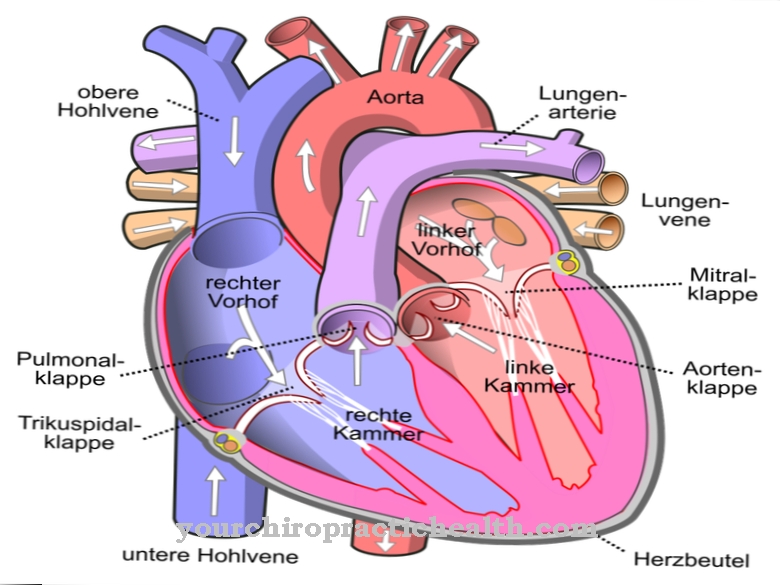The Socket is one of two surfaces of a joint. It is used to accommodate the joint head and enables the range of motion of a joint. In the event of a dislocation, the joint head slides out of the associated socket.
What is the joint socket?
The human body is equipped with 143 joints, which essentially determine flexibility and motor skills. Every joint in the human body has essentially the same structure. In addition to a joint cartilage, a joint space with synovial fluid, a joint capsule and a ligament apparatus to strengthen the joint, each joint contains a joint head and a joint socket.
The joint socket corresponds to the concave section of the joint and is used to accommodate the convex joint head. As soon as two bones meet in the human body, they form a joint with one another. The end of one bone acts as a joint socket and thus as a receptacle for the joint head formed by the other end of the bone. The shape of a joint socket therefore depends on the joint head that it is to accommodate. The socket of a ball-and-socket joint, such as the hip or shoulder, looks accordingly different from the socket for receiving a hinge joint, saddle joint, swivel joint, egg joint or flat joint.
Anatomy & structure
Joint sockets usually have a more or less strongly concave shape, especially the ball joints of the body. The shape of a joint socket is relatively variable and depends on the type of joint. The hip and shoulder joints are, for example, ball joints. The socket of the shoulder joint is comparatively small in relation to the joint head and looks rather flat at first glance.
The hip joint is also a ball joint. The joint socket of the hip joint is also referred to as the acetabulum and corresponds to a relatively deep and pit-shaped receptacle that encompasses large parts of the joint head. These relationships show how different even the socket of the same joint type can be. In the case of hinge joints such as the humeroular joint, a hollow cylindrical joint socket accommodates a cylindrical joint head.
Saddle joints such as the thumb saddle joint, on the other hand, consist of two concave joint surfaces, with the upper joint part sitting on a saddle-shaped pan like a rider. Rotary joints such as the radioulnar joint have a peg-like head that sits in a channel-shaped, short joint socket. The socket of egg joints is larger than the joint head and flat joints such as the vertebral arch joint do not have a socket in the narrower sense, but consist of two flat surfaces that slide freely against each other.
Function & tasks
Joint sockets are cup-shaped designs for receiving the joint head. They are one of two articular surfaces. As a rule, the joint head of a certain joint moves in the associated pan similar to a mortar in the shell. How exactly a joint socket works depends on the type of joint. When bones meet in a joint, the shape of the bone surfaces and thus also the shape of the joint socket determine the movements that are possible in the area of the joint.
With ball joints such as the hip and shoulder, a ball-shaped joint head in the counter-shaped joint socket allows movement in all directions. In the case of a hinge joint such as the ankle joint, on the other hand, the combination of head and socket allows movements only around a single axis. The groove-like receptacle of the roller-like joint head prevents other types of movement in this case. Gripping saddle joints like the thumb saddle joint allow a little more movement compared to this. The movements take place in these joints in two mutually perpendicular directions.
In the case of pivot joints, only a rotary movement is possible due to the joint socket and the associated head. Joint sockets and joint heads thus have two main functions. On the one hand, they connect bones or bone ends to one another and, on the other hand, they enable these flexible connections to move the bones. The joint socket is about as important a role in the motor system as the head of the joint.
Without the unit of head and socket, no stretching, bending, splaying movements, moving movements or external and internal rotations would be possible. Accordingly, human mobility would be severely restricted in a similar way to paralysis of the muscles involved in movement.
Diseases
In certain circumstances, joints can be affected by injuries that cause the two joint surfaces to lose contact with one another. As a rule, such phenomena are caused by external violence. If the head of a joint is no longer in the socket, the doctor speaks of a dislocation.
The dislocation is usually accompanied by a tear in the associated joint capsule, which shifts the two joint surfaces or allows them to slide apart. The dislocation can also be incomplete and is then referred to as subluxation. In the case of a direct dislocation, an external force acts directly on the affected joint and causes a ligament and capsule tear to occur, which allows the joint head to slide out of the joint socket. The situation is different with indirect dislocation. In this type of dislocation, the natural motor inhibition of a joint is overcome by the long lever arms.
In this type of dislocation, a bone levers the joint head out of the joint socket. In addition to the dislocation, the joint socket can also acquire pathological value in the context of diseases such as the rare Legg-Calvé-Perthes disease. In this disease, one or both sides of the femoral head is affected by avascular necrosis. Although the necrosis is compensated by processes of osteogenesis, the resulting bone is often deformed. As a result, the femoral head often no longer fits into the acetabulum.

























.jpg)

.jpg)
